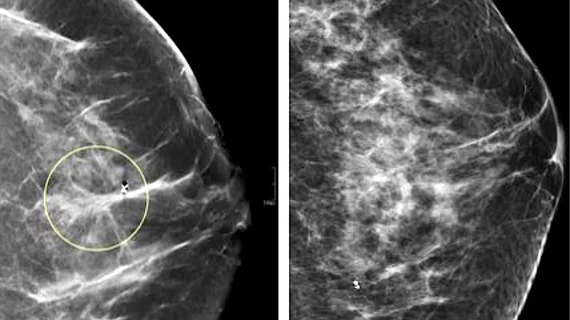Radiologist performance has improved since the introduction of DBT for breast cancer screening
As the use of digital breast tomosynthesis (DBT) has markedly increased in recent years, so too have radiologists’ interpretive performances.
A new paper published in Radiology compares radiologist performance when reading 2D and 3D mammography screenings. Based on more than 2 million screening exams included in the retrospective analysis and multiple measures, experts concluded that radiologists’ performance has significantly improved with the growing use of DBT.
“Our study demonstrated that more radiologists in U.S. community practice are meeting recommended performance standards with digital breast tomosynthesis than they did with digital mammography,” said lead author Christoph I. Lee, MD, professor of radiology at the University of Washington (UW) School of Medicine in Seattle and director of the Northwest Screening and Cancer Outcomes Research Enterprise at UW. “This is good news for women and breast cancer screening, as digital breast tomosynthesis has quickly become the most popular breast cancer screening modality in the U.S.”
Since receiving approval from the U.S. Food and Drug Administration in 2011, DBT has become the most common method for breast cancer screening and as of September 2022, 84% of all U.S. mammography screening facilities housed DBT units.
Experts sought to assess whether the growing popularity of DBT screening has had any impact on radiologist performance benchmarks established by the Breast Cancer Surveillance Consortium (BCSC). To do this, the team analyzed DBT screening exams from five BCSC registries that occurred between 2011 and 2018. Altogether, this resulted in a total of 2,301,766 screening exams—458,175 DBT and 1,843,591 2D digital mammograms.
Radiologist performance measures were based on abnormal interpretation rate (AIR), cancer detection rate (CDR), sensitivity, specificity and false-negative rate (FNR). The team found that use of DBT resulted in improved performance in every category except sensitivity and FNR, which were both in line with 2D performance measures.
Lee signaled optimism for how such improved performance also could positively impact screening outcomes in the future.
The study abstract is available here.

